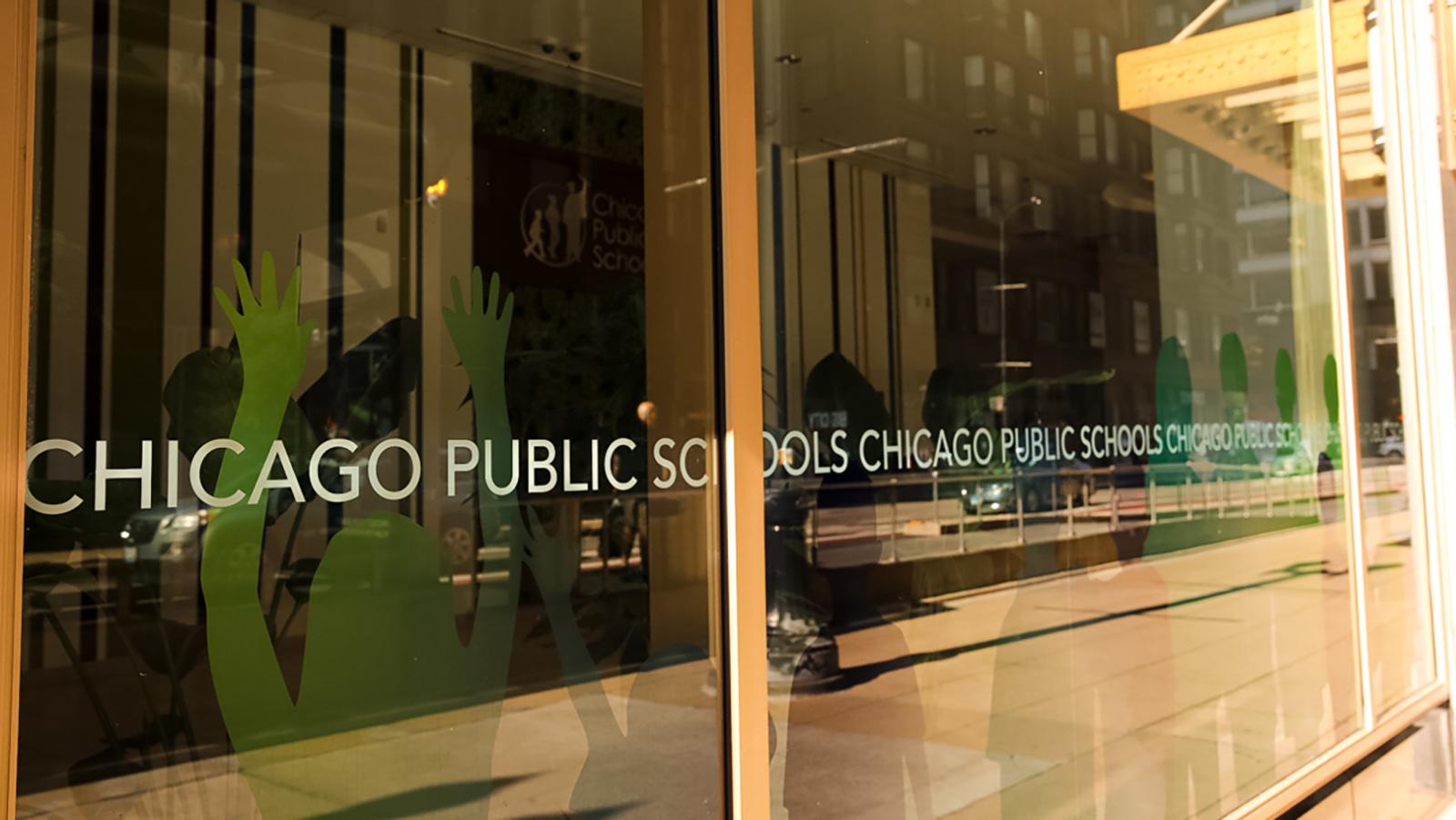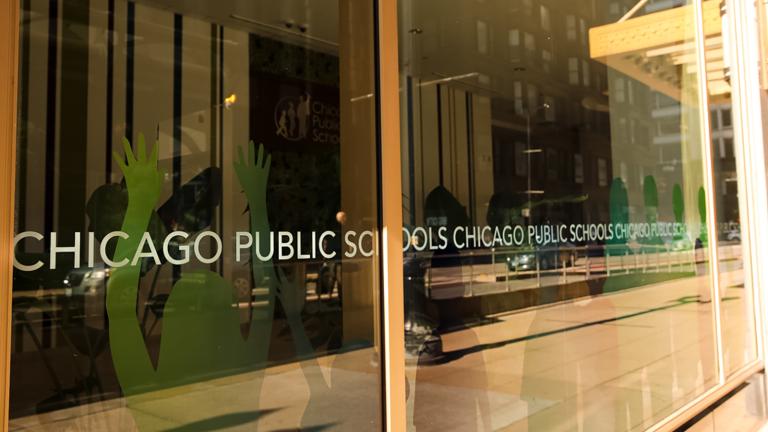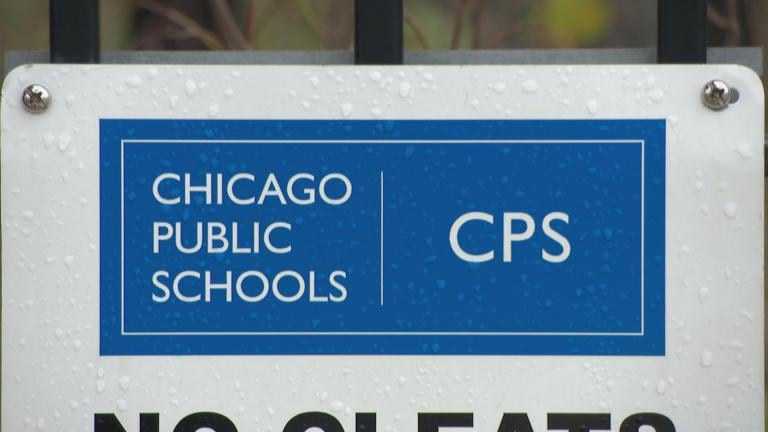 Chicago Public Schools headquarters. (Michael Izquierdo / WTTW News)
Chicago Public Schools headquarters. (Michael Izquierdo / WTTW News)
A year from now, Chicago voters will for the first time decide who will run the city’s schools.
But first, Illinois legislators have a lot of decisions to make about how that process will work.
Chief among their responsibilities is dividing Chicago into 20 districts.
Ahead of lawmakers’ return to Springfield next week for the last time this year, a General Assembly task force has released its third, latest version of an elected school board district map.
State Sen. Robert Martwick, a Chicago Democrat who sponsored the law creating Chicago’s first elected school board, said lawmakers tried last spring to take residents’ input into consideration with the initial drafts.
“And people said, ‘You did a terrible job of it,’” Martwick said. “We said, ‘OK, let’s go back to the drawing board.’”
The latest map is the next attempt, and “the product of hundreds of hours of discussions and significant input from stakeholders across our Chicago communities,” said state Rep. Ann Williams, the Chicago Democrat who chairs the House Democratic CPS Districting Working Group. “My colleagues and I wanted to be sure we took the time to listen and produce a map that incorporates what we have heard.”
Already, though, a vocal education organization complains its considerations were brushed aside.
“It’s time to listen to your constituency,” said Daniel Anello, CEO of the Black and Latino education nonprofit Kids First.
Kids First is among advocates that want the map to “respect” the makeup of CPS’s student body. According to district data from September, CPS students are nearly 47% Latino, 35% Black and 11% White.
Kids First said its map drafters have submitted proposals that would reflect that in the school board districts, such that there would be eight primarily Latino, seven Black, and five White districts.
By its count, Kids First said the map submitted by legislators separates the 20 total districts into six Latino majority/plurality, seven Black and seven White districts.
Legislators categorize their plan differently.
Press releases from the state Senate and House Democrats involved with the map say that there are only five majority White districts and two “coalition” districts where no demographic group is in the majority, but White adults make up the plurality.
Per a WTTW News review of the data provided by legislators, district D that covers the Far Northeast Side of Chicago (including Rogers Park, West Ridge and parts of North Park) has a voting age population that’s 40% White, 18% Black and 19% Latino, while district L on the Northwest Side (comprised of parts of North Park and Albany Park, Old Irving Park and Portage Park) has a 46% White, 41% Latino and 8% Asian voting age population.
WTTW News’s overview of the data shows the majority Black districts are C, F, I, J, O, R and S; majority Latino districts are E, K, M, N, P and Q; and the majority White districts are A, B G, H and T. See the proposed map to find the areas designated as lettered districts.
Martwick had no comment on Kids First’s specific concerns. He said legislators will hear and consider constituents’ ideas at as-yet-unscheduled upcoming hearings.
He said it’s impossible to satisfy everyone given the array of opinions, but if the feedback is that the attempt to address previous concerns is insufficient, the General Assembly could try again.
“You’re not moving boundaries, you’re creating an entirely new map, and people have very, very specific idea of how that should look, and not surprisingly, they have very different ideas,” said Martwick, who is vice-chair of a special Chicago elected school board committee.
Martwick said it’s illegal under the federal Voting Rights Act — which has requirements meant to protect the voting interests of minority voters — to draw districts based on the student population; rather, the makeup of districts must be based on the voting age population.
Illinois representatives and senators are scheduled to be in Springfield from Tuesday through Thursday next week for the second half of the six-day veto session; after that, they’re not likely be back in the capitol again until 2024.
After widespread frustration with the two earlier proposed elected school board maps, legislators extended the deadline until April they have to get it done.
But Martwick said the goal is for the legislature to pass the maps during this fall’s short session.
“The process of bringing about democracy where none existed: I think more time is better than less, for people to understand what their districts are, how they’re going to organize, if they’re going to run,” Martwick said. “It’s my sincere hope that we get it done now. That being said, it has to go through the process.”
Illinois’ new law creating the elected school board recreates the board in stages. Chicagoans will elect the first 10 elected school board members in November 2024; they’ll start terms in 2025 alongside 10 members and a board president appointed by the mayor.
The first elected board members will serve four-year terms.
Midway through those first terms, in the 2026 election, voters will choose who to fill the seats held by appointees, such that the board will be fully elected come 2027.
Follow Amanda Vinicky on Twitter: @AmandaVinicky






